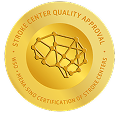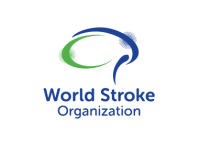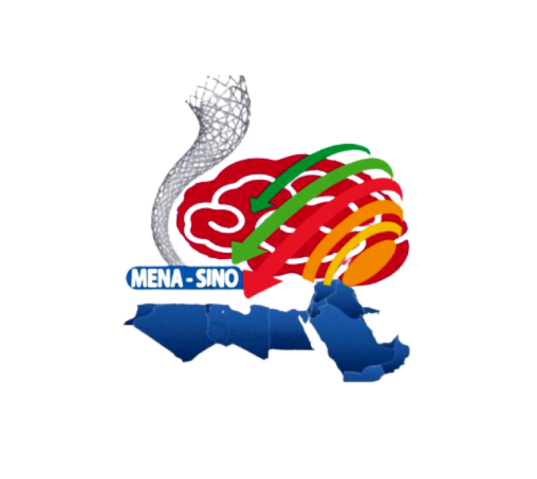
Critérios para a Certificação
dos Centros de AVC
Propósito
O objetivo do programa de certificação de centros de AVC é aumentar a qualidade do cuidado ao AVC na Índia, com o objetivo final de melhorar os desfechos para os pacientes.
Após o cumprimento dos critérios, incentivaremos os hospitais a solicitarem a certificação como Centros de AVC WSO/NABH. A certificação dos centros de AVC é uma etapa prioritária para orientar o cuidado nacional do AVC, por meio da aplicação de protocolos baseados em evidências que abrangem toda a linha de cuidado. Portanto, trabalharemos em conjunto com as Sociedades Médicas e Gestores de Saúde de cada país (Ministérios da Saúde/Secretarias de Saúde).
Este programa foi desenvolvido para garantir a implementação de elementos prioritários nos centros de AVC, aumentando a qualidade e a segurança do atendimento, além de melhorar os resultados em longo prazo. Com uma equipe de especialistas em AVC, ofereceremos sugestões para a melhoria dos serviços, materiais para treinamento de equipes, educação continuada, publicações científicas, além da certificação internacional publicada em nosso site e no aplicativo que estará disponível à população. Esperamos que, no futuro, a certificação também contribua para uma melhor remuneração dos serviços de saúde.
Documentos que devem ser enviados na Plataforma
| Criteria | Essential Stroke Center | Advanced Stroke Center |
|---|---|---|
| Access to hyperacute stroke care | ||
| Protocols for rapid evaluation and diagnosis of stroke patients in Hospital/ Emergency department 24hours/day, 7days/week, with time metrics assessment | Mandatory | Mandatory |
| Access to basic diagnostic services | ||
| Laboratory blood test 24/7 (CBC, electrolytes, urea, glucose, INR, PT) | Mandatory | Mandatory |
| Electrocardiogram (12 lead) 24/7 | Mandatory | Mandatory |
| Computed Tomography (CT) scan brain 24h/7 days | Mandatory | Mandatory |
| Capability to do CT Angiography (CTA) 24/7 | Recomendado | Mandatory |
| Transthoracic Echocardiogram | Mandatory | Mandatory |
| Vascular Doppler ultrasound | Mandatory | Mandatory |
| Holter monitors | Recommended | Recommended |
| Access to advanced diagnostic services | ||
| Magnetic Resonance Imaging (MRI) | Mandatory | |
| Capability to do MR Angiography | Mandatory | |
| CT or MR Perfusion scans | Recommended | |
| Prolonged ECG monitoring devices | Recommended | |
| Transcranial Doppler | Recommended | |
| Transesophageal Echocardiogram | Recommended | |
| Access to emergency medical services –EMS– (ambulance)? ( ) Yes ( ) No | Recommended | Recommended |
| If yes: | ||
| Training of ambulance crews to identify stroke signs using FAST mnemonic or similar | Recommended | Recommended |
| Work with ambulance systems to have stroke identified as a high priority transport emergency | Recommended | Recommended |
| Access to nurses and nursing assessment with stroke training | ||
| Acute care settings (the training should be documented, at least 4 hours/year – the documentation can be uploaded in the platform or should be presented during the onsite visit) | Mandatory | Mandatory |
| Stroke unit settings (the training should be documented, at least 4 hours/year – the documentation can be uploaded in the platform or should be presented during the onsite visit, including stroke unit protocols, neurological assessment and swallow screen) | Mandatory | Mandatory |
| Access to physicians with stroke expertise in acute stroke care available 24h/7 days | Mandatory | Mandatory |
| Check below the specialist responsible for thrombolysis treatment in your hospital (check all available) | ||
| Neurologist | ( ) | ( ) |
| Neurosurgeon | ( ) | ( ) |
| Emergency physician | ||
| Intensivist | ( ) | ( ) |
| Other speciality | ( ) | ( ) |
| Access to stroke specialists through telestroke modalities, and teleradiology | ( ) | ( ) |
| Access to physicians with expertise in stroke prevention and stroke rehabilitation | Recommended | |
| Program to develop and maintain core competencies and stroke care | Mandatory | Mandatory |
| Access to acute inpatient stroke care, where admitted stroke patients are cared for on: | Mandatory (1 available, the item is positive) | Mandatory (1 available, the item is positive) |
| Stroke Unit (a defined group of beds, staff, and protocols that are used for the acute care of patients with a stroke) | ( ) | ( ) |
| Clustered model on same ward | ( ) | ( ) |
| Access to acute Intravenous thrombolysis | ||
| IV thrombolysis | Mandatory | Mandatory |
| Members of a interdisciplinary stroke team | ||
| Neurologist with stroke expertise (or Stroke physician in some countries) | Mandatory | Mandatory |
| Stroke Nurses | Mandatory | Mandatory |
| Nursing assistants | Mandatory | Mandatory |
| Pharmacist | Recommended | Recommended |
| Social worker/case manager | Recommended | Recommended |
| Palliative Care team | Recommended | Recommended |
| Physiotherapist | Mandatory | Mandatory |
| Occupational Therapist | Recommended | Recommended |
| Speech-Language Pathologist | Mandatory | Mandatory |
| Neurosurgeon | Recommended | Mandatory |
| Neurointerventionalist (Interventional Neurologist OR Endovascular Neurosurgeon, OR Interventional Neuroradiologist) | Mandatory | |
| Access to stroke unit protocols to guide acute stroke care based on best practice guidelines (Medical and nursing assessments) | ||
| Swallowing assessment performed | Mandatory | Mandatory |
| Nutrition, hydration | Recommended | Recommended |
| Functional status, mobility, DVT risk | Recommended | Recommended |
| Level of dependency | Recommended | Recommended |
| Skin Integrity | Recommended | Recommended |
| Bladder and bowel continence | Recommended | Recommended |
| Temperature management | Recommended | Recommended |
| Positioning, mobilization | Recommended | Recommended |
| Access to stroke prevention therapies such as antiplatelet therapy, anticoagulants, lifestyle change recommendations, blood pressure management | Recommended | Recommended |
| Access to advanced interventions: | ||
| Endovascular thrombectomy 24/7 | Mandatory | |
| Neurosurgery for hemorrhagic stroke 24/7 (including clipping and intraventricular drain placement) | Recommended | Mandatory |
| Hemicraniectomy for ischemic stroke 24/7 | Mandatory | |
| Acute inpatient stroke units | Recommended | Recommended |
| Intensive care unit on site | Recommended | Mandatory |
| Products to reverse coagulopathy | Recommended | Recommended |
| Access to stroke rehabilitation services | ||
| Early access to rehabilitation therapies – including cross training of skills to nurses, nursing assistants and family members | Recommended | Recommended |
| Early functional assessments, goal setting and individualized rehab plans developed | Recommended | Recommended |
| Organization of Stroke Care | ||
| Stroke Director | Mandatory | Mandatory |
| Nurse Coordinator | Mandatory | |
| Stroke Task Force (meets monthly) discusses data, guides, performance, improvement | Mandatory | Mandatory |
| Interdisciplinary meetings weekly to discuss patient progress against treatment goals; update management plans | Recommended | Recommended |
| Patient and family education, skills training, and involvement in care planning | Recommended | Recommended |
| Discharge planning | Recommended | Recommended |
| Stroke training programs for all levels of healthcare providers | Recommended | Recommended |
| Participation in quality assessment of services (registry) – 4 months of data collection in the registry and performance measures must be included in the platform before the visit | Recommended | Mandatory |
| Printed stroke patient educational materials | Recommended | Recommended |
| Treatment Requirements | ||
| Thrombolysis (minimum number recommended per year) | 10 | 20 |
| Thrombectomy (minimum number recommended per year) | 10 | |
| Coordinated stroke care provided across geographically discrete regions | ||
| Stroke pathways that define movement of stroke patients across region to higher and lower levels of services as required | Recommended | Recommended |
| Coordinated referral system | Recommended | |
| Provide telestroke consultations to smaller and more rural centers | Recommended | |
| Education of population | Recommended | Recommended |
| Implement research in stroke | Recommended |
Organização


Nossos parceiros e patrocinadores
Alcançar nosso propósito de uma vida sem AVC é uma tarefa que não podemos realizar sozinhos. Estamos empenhados em construir nossas parcerias globais, regionais e nacionais para expandir e entregar melhorias na prevenção, tratamento e apoio para reduzir o impacto do AVC.
